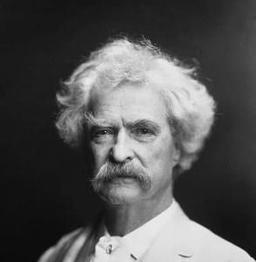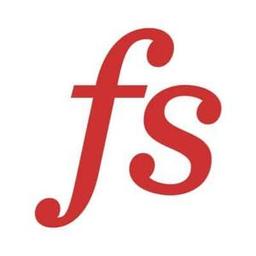56 Quotes
"In order to accomplish this, these applications provide a data model, which again provides an opinionated view into how that function or process should be viewed and structured."
— Matt Slotnick
a unified theory of low/no code, middleware, and the future of enterprise applications"let’s assume that Salesforce has three parts — the UX that end users interact with (the app itself), middleware that connects that application to the back ends, or databases, where the data itself is stored."
— Matt Slotnick
a unified theory of low/no code, middleware, and the future of enterprise applications"Investors at all stages discuss the concept of platform — they want to invest not in tools, nor in products, but in companies that have the potential to become platforms."
— Matt Slotnick
a unified theory of low/no code, middleware, and the future of enterprise applications"There are many definitions of platform, depending who you ask — I propose that we’ll use the following: a platform is an application that provides a set of interfaces upon which other applications can be built."
— Matt Slotnick
a unified theory of low/no code, middleware, and the future of enterprise applications"Essentially, it allows for extension and customization on top of the data models that are defined in the core platform application."
— Matt Slotnick
a unified theory of low/no code, middleware, and the future of enterprise applications"Force.com was Salesforce’s move into the platform as a service business, which allowed customers to build custom applications that are deployed to and hosted on Force.com, sitting on top of the Salesforce data model."
— Matt Slotnick
a unified theory of low/no code, middleware, and the future of enterprise applications"This enables developers (including a wide range of 3rd party Salesforce consultants) to create custom applications that are tailored to the specific processes and workflows that exist in their organization."
— Matt Slotnick
a unified theory of low/no code, middleware, and the future of enterprise applications"The Salesforce AppExchange is a marketplace of applications built by 3rd parties to extend and expand the functionality of Salesforce across industries, geographies, and functional areas."
— Matt Slotnick
a unified theory of low/no code, middleware, and the future of enterprise applications"the AppExchange allows for external developers to create their own apps, to be published into the marketplace for consumption by all Salesforce customers."
— Matt Slotnick
a unified theory of low/no code, middleware, and the future of enterprise applications"Lightning provides both low- and no-code development experiences for non-professional engineers to create, deploy, and manage both mobile and desktop applications."
— Matt Slotnick
a unified theory of low/no code, middleware, and the future of enterprise applications"These apps serve a number of purposes — but largely serve to expand who can customize and build Salesforce apps."
— Matt Slotnick
a unified theory of low/no code, middleware, and the future of enterprise applications"Salesforce has long understood that their core value and defensibility is that businesses are inherently customer centric, and the most valuable data at a company is the data related to how they sell to and serve their end customers."
— Matt Slotnick
a unified theory of low/no code, middleware, and the future of enterprise applications"Data has gravity, and this system of record both commands immense value on its own, but also creates influence on all other systems within an organization."
— Matt Slotnick
a unified theory of low/no code, middleware, and the future of enterprise applications"Other systems need to play well with Salesforce, because if they don’t, they’re unlikely to be adopted. This makes Salesforce the System of Record."
— Matt Slotnick
a unified theory of low/no code, middleware, and the future of enterprise applications"If your marketing system has to understand who your top prospects are, and those live in Salesforce, your marketing system must be able to read from (and probably write to) Salesforce."
— Matt Slotnick
a unified theory of low/no code, middleware, and the future of enterprise applications"If you take as a fact that we’ve established Salesforce as the System of Record and center of gravity for how a company operates its go to market organization, we can then move on to the question of how people interact with that data."
— Matt Slotnick
a unified theory of low/no code, middleware, and the future of enterprise applications"The various interfaces through which these parties interact with Salesforce are the Systems of Engagement."
— Matt Slotnick
a unified theory of low/no code, middleware, and the future of enterprise applications"These are the methods by which you interact with, and get value from the data that you have stored and structured (storing data for the sake of data generally benefits no one, except maybe your cloud provider)."
— Matt Slotnick
a unified theory of low/no code, middleware, and the future of enterprise applications"It is also the way in which subsequent data is entered into the system, creating defensibility for the platform. These interfaces might be any number of native or custom apps, or they might be APIs that are used by other systems."
— Matt Slotnick
a unified theory of low/no code, middleware, and the future of enterprise applications"But what’s important is that Salesforce’s place as a System of Record gives them the right to influence the Systems of Engagement."
— Matt Slotnick
a unified theory of low/no code, middleware, and the future of enterprise applications"Why does this matter? It means that the systems of record and systems of engagement are increasingly being decoupled."
— Matt Slotnick
a unified theory of low/no code, middleware, and the future of enterprise applications"Data might have gravity, but relying on the primacy of your system as the data store at the expense of user experience is a dangerous proposition."
— Matt Slotnick
a unified theory of low/no code, middleware, and the future of enterprise applications"entrench your position as the system of record and engagement, or create a platform that allows for myriad systems of engagement, while maintaining a hold on your place as the system of record."
— Matt Slotnick
a unified theory of low/no code, middleware, and the future of enterprise applications"By creating an ecosystem around your system of record moat, you ensure that customers have no reason to leave."
— Matt Slotnick
a unified theory of low/no code, middleware, and the future of enterprise applications"Essentially, they would start using a new app entirely, perhaps using copies of data from the CRM initially. This creates a wedge between the customer and Salesforce’s money maker — the system of record."
— Matt Slotnick
a unified theory of low/no code, middleware, and the future of enterprise applications"That new app owns the customer relationship, and brings a new, more relevant data model. It’s not hard to imagine the next step, where that application then introduces its own backend data store, and ultimately disintermediates Salesforce entirely."
— Matt Slotnick
a unified theory of low/no code, middleware, and the future of enterprise applications"The beauty of the Salesforce model is that it’s already the default system of record — so by providing the platform, they allow innovation on the interaction methods by not just Salesforce itself, but their customers and all manner of 3rd parties (ISVs, system integrators, small development shops, consulting firms)."
— Matt Slotnick
a unified theory of low/no code, middleware, and the future of enterprise applications"This further entrenches Salesforce as a platform, as each incremental use case and engagement method creates additional value and increased costs to switch."
— Matt Slotnick
a unified theory of low/no code, middleware, and the future of enterprise applications"Middleware is a broad bucket that includes the various sorts of software that connect different applications and data sources together."
— Matt Slotnick
a unified theory of low/no code, middleware, and the future of enterprise applications"But as systems become more complicated, and environments become more heterogeneous and hybrid, layers of middleware become fantastically important when you consider that most companies use hundreds of applications, and that those applications are rarely useful when they exist in a vacuum, unconnected to the broader company’s systems, processes, and data models."
— Matt Slotnick
a unified theory of low/no code, middleware, and the future of enterprise applications"You generally don’t want your integration product to have opinions about where data should go, you just want it to match the patterns that are required by your business. There are a lot of examples of phenomenal standalone businesses built in the middleware market."
— Matt Slotnick
a unified theory of low/no code, middleware, and the future of enterprise applications"So why pay an acquisition premium for Switzerland, thereby destroying it’s very swissness? The answer is platforms, and more specifically, data models and systems of record."
— Matt Slotnick
a unified theory of low/no code, middleware, and the future of enterprise applications"By owning the middleware layers, you have an influence and an ability to export your data model from your system of record to every other would-be system of record that the customer has adopted."
— Matt Slotnick
a unified theory of low/no code, middleware, and the future of enterprise applications"It gives you a say in how every aspect of a customer’s business is viewed."
— Matt Slotnick
a unified theory of low/no code, middleware, and the future of enterprise applications"Because it’s in Salesforce’s best interest that every application that will ever exist on earth connects very easily with Salesforce."
— Matt Slotnick
a unified theory of low/no code, middleware, and the future of enterprise applications"Mulesoft is a strong player in multiple middleware categories — ESB, iPaaS, and API Management, each of which are large and growing markets."
— Matt Slotnick
a unified theory of low/no code, middleware, and the future of enterprise applications"They are playing with a fundamentally different incentive structure, and have access to additional levers of customer value and monetization that a standalone product does not."
— Matt Slotnick
a unified theory of low/no code, middleware, and the future of enterprise applications"Probably because the Lightning App platform is new(ish), not particularly great, and very Salesforce ecosystem centric."
— Matt Slotnick
a unified theory of low/no code, middleware, and the future of enterprise applications"As asserted earlier, enterprise software exists predominantly to structure and enable a process, and brings an opinion to how that process is to be done."
— Matt Slotnick
a unified theory of low/no code, middleware, and the future of enterprise applications"All an application really is though, is a UX on a relational database. That “database” could be a spreadsheet, or it could be whatever database Salesforce embeds in their product to store all of your data"
— Matt Slotnick
a unified theory of low/no code, middleware, and the future of enterprise applications"Additionally, in a modern world, that “database” against which you’re building applications is more likely to be a number of smaller “databases” underlying the various products and tools with which you run your business and interact with customers and users."
— Matt Slotnick
a unified theory of low/no code, middleware, and the future of enterprise applications"what low code really is, is a semi opinionated UX customization layer that sits on top of that database."
— Matt Slotnick
a unified theory of low/no code, middleware, and the future of enterprise applications"Instead of requiring Salesforce, or a partner on the AppExchange, or Salesforce consultants to build the app that resembles the process you have in your head, you can build it yourself with a set of tools that consist of some mix of drag and drop elements, forms, lists, and other modular building blocks for an application."
— Matt Slotnick
a unified theory of low/no code, middleware, and the future of enterprise applications"This allows you to build the application or workflow that is required for your specific use case for your specific user. Gone are the “a couple sizes fit most” days of enterprise applications. Enter “endless customization” of enterprise applications."
— Matt Slotnick
a unified theory of low/no code, middleware, and the future of enterprise applications"Salesforce is really about two things — helping you to interact with your customers (system of engagement), and helping you to catalogue those interactions (system of record)."
— Matt Slotnick
a unified theory of low/no code, middleware, and the future of enterprise applications"Many deals are closed with steak dinners, but products are increasingly purchased, not sold."
— Matt Slotnick
a unified theory of low/no code, middleware, and the future of enterprise applications"Enterprise sales has a lot more in common with B2C sales than it ever has."
— Matt Slotnick
a unified theory of low/no code, middleware, and the future of enterprise applications"Sales and marketing are far closer cousins than at any point in the past."
— Matt Slotnick
a unified theory of low/no code, middleware, and the future of enterprise applications"consider that every business will increasingly expect to have access to applications that allow them to transact in the manner that suits their specific business and mental models, not a set of semi-rigid pre-provided pages and views."
— Matt Slotnick
a unified theory of low/no code, middleware, and the future of enterprise applications"If the application UX for how you manage and view customer relationships has changed, and the methods by which you engage with customers has changed, if you really squint, what is Salesforce other than a repository of relational customer data that describes what has already happened?"
— Matt Slotnick
a unified theory of low/no code, middleware, and the future of enterprise applications"But the customer record is built on a set of interactions that are occurring, constantly, outside the purview of the Salesforce platform."
— Matt Slotnick
a unified theory of low/no code, middleware, and the future of enterprise applications"Data may have gravity, but backwards looking data stored in a relational database is rarely as useful as insights into what your customer is doing now, and what they might be wanting to do in the future."
— Matt Slotnick
a unified theory of low/no code, middleware, and the future of enterprise applications"Perhaps most importantly, is that Salesforce has a structural incentive to sell more licenses for seats of their underlying platform."
— Matt Slotnick
a unified theory of low/no code, middleware, and the future of enterprise applications"This dynamic — the continued decoupling of the creation and engagement with data from the storage and structuring of that data — leaves all incumbent enterprise applications vulnerable to low code vendors in the long term."
— Matt Slotnick
a unified theory of low/no code, middleware, and the future of enterprise applications"Customer interactions drive business value, while the underlying database decisions very rarely do. The modern company seeks to innovate at the top of the stack, close to the customer, not the bottom."
— Matt Slotnick
a unified theory of low/no code, middleware, and the future of enterprise applications"The potential Twilio customer engagement platform rethinks these interactions and opens the door to an infinite number of signals, not just those that fit nicely into a relational paradigm."
— Matt Slotnick
a unified theory of low/no code, middleware, and the future of enterprise applicationsExplore More Quotes 📚
Want to Save Quotes?
Glasp is a social web highlighter that people can highlight and organize quotes and thoughts from the web, and access other like-minded people’s learning.

















